INTRODUCTION
Whenever I start remembering my first chess steps, I can’t resist paraphrasing the title of the famous Garry Kasparov autobiographic book – How chess imitates life. And for everybody thinking „Oh great, Vjeko, too much blitz on chesscom is again causing damage to your brain“ , please, let me elaborate.
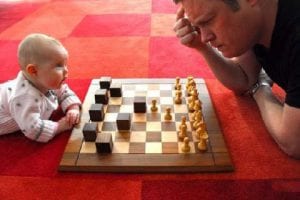
Because as much as a person has very few recollections of his earlier days on the planet, a chess player can very vaguely remember his earliest creations. Especially ones played under faster time controls.
Probably the most reasonable explanation of this phenomenon lies in the fact that there is positive corelation between playing strength and ability to visualise the moves and the pieces without looking at the board.
Ability that is especially apparent when trying to remember your own chess games „from head“ immediately after they have been played. Or when trying to play blindfold chess.
Furthermore, things we DO remember both as children and as chessplayer are typically isolated incidents usually connected with periods when we experienced strong emotional surges (you know, like Harry Potter’s scar burned when Lord Voldemort was angry at Pet… Okay,okay, let’s stick to chess ).
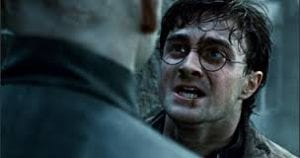
Everything I wrote above applies very much for me. As well as I can remember eating those delicious cookies and trying to take one more only to be interrupted by my mother („Only two for you!!“), I can just as easily recall some of the most traumatic events that happened to me on the very limited space of 64 squares.
One of those traumas stands out particularly, because I believe it belongs to one of those „ you just got schooled“ events that every chess players has to go through. And that is the first time I fell victim to the infamous Legal’s mate opening trap.
I still remember how proudly I took my bishop out of c8 to pin the knight on f3 and proudly dismissing all that „rubbish“ about how one should develop his knights before his bishops – because look at this how this knight now can’t move.
If you are even slightly educated chess player you can probably imagine what followed and laugh at my astonishment when the White knight suddenly jumped on e5 and I went on to capture the opponent’s queen with lightning speed while simultaneously shouting „Ha, what a patzer“. Naturally, some 10 seconds later with the white knight mating my king on d5 I realized that there is only one patzer at the board and that is unfortunatelly not my opponent.

After this lengthy, yet rather very… unnecessary introduction, we can finally arrive at the main topic of this post. One of the basic principles in chess is the so called „pattern recognition“, which for those more coolinary oriented can be interpreted as a cooking book.
Pattern recognition is basically …recognizing patterns (i bet you were quite taken aback by this one). It means that during the game our brain is constantly trying to relate the position on the board to something we have seen before.
Pattern recognition is one of the reasons why all world class player can recall hundreds of historical games. And also why it is important to learn the plans in specific pawn structures, why often we hear comments about a move being typical in a certain position, etc.
Pattern recognition applies to all aspects of the game, but I would say that it’s importance in tactical play cannot be overemphasized.
The reason why many novice players take the queen even when they should „smell a rat“ is because it is hard to imagine that their king can be mated so early in the game (becuase they are unfamiliar with the piece construction behind it).
And even if they would „smell it“, recognizing the pattern would make their calculating task immensly easier, because, you know, it is easier to look for something that you know is already there.
That is the reason why almost universal advice for novice players who want improve their chess but don’t know where to start is to improve their tactics and their tactical awareness.

And that is the reason why I decided to review one of my very first and favourite tactical books about different mating attacks and patterns, The art of the checkmate, by Georges Renaud and Victor Kahn.
ABOUT THE AUTHORS
The art of the checkmate is one of those books whose author’s names don’t bear immediate recognition (even if you are chess-history fanatic like myself).
Both authors achieved their greatest playing successes in the first half of the 50th century. Georges Renaud was the victor of the first French Chess Championship held in 1923 (according to some Internet sources, his very close friend Alexander Alekhine kibitzed on that championship and congratulated him afterwards with the words „And now Georges, there is only one more thing for you to do: that is, learn how to play.“ Just so you know when you next hear something similar from your extremely humorous chess friend.). Renaud also represented France on the earliest Chess Olympiads, but prefered to be theoretician and chess author more often then chess player.
Victor Kahn on the other hand had a very peculiar path. He was born in Russia in 1889. and emigrated in 1912, eventually settling in France (after more or less wandering around Northern Europe). Later he played many chess tournaments, particularly in France, in the turbulent pre WWII years. He also played for France in the Chess Olympiads in the 30s (interestingly enough, he played for Russia in the unofficial 1924 Paris Olympiad).
We can only be very thankfull that these unorthodox life events resulted in these two guys meeting each other and writing this book.
GENERAL IMPRESSION
Since I have announced this book in a somewhat spectacular fashion, you might expect the praise to continue. But as a cold shower I have to advise some caution at start. The thing you need to be aware of is the fact that the book was first published in 1953.. in SYMBOLIC notation.
If you are unfamiliar with the symbolic notation (the notation where move 1. e4 is written with 1. pK4, signalling that pawn in front of the king is moved to square 4 on the king file), this might represent a very grave problem.
It is true that symbolic notation is not the hardest thing in the world to learn, but IT IS highly impractical and makes reading much more difficult, especially without using the board. It is simply much easier to visualize if a pawn finds itself on g7 instead of trying to locate it on the KN7 square (King’s knight file, seventh rank.. you got the point).
The good news is that recently the book was republished with the modern algebraic notation. Of course, one has to bear in mind that having „such luxury“ also manifests itself in monetary sense, and it is a matter of personal choice, since except notation and translation, there were no major content changes (and to be honest, as an average English speaker I haven’t noticed major translation errors in the first place).
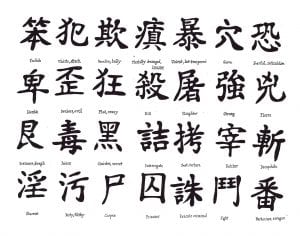
Other than that little downside, everything in the book is „Fuckin A“ for me. The number of diagrams is adequate, there are no unnecessary lengthy digression (unlike on this blog) and from the teaching aspect the material is very coherent, readable and easy to follow. That also manifest itself in the book length. The material can be devoured in one afternoon and if you forget something (and you probably will after reading at such a hurried pace) you can easily open the book at any page and start reading anew without needing to relate to paragraph 5 on the page 56 of the chapter 7 just to understand where the hell is the last horcrux… okay, okay, no more children book references.
Therefore, I will give a very biased and subjective maximum mark for the general impression department of the book
GENERAL IMPRESSION MARK ★★★★★
CHESS CONTENT
The book consists of 32 chapters covering more than 20 typical patterns.
The book covers some of the most typical mating attacks and patterns that i think every selfrespected chess player should be familiar with:
- Legal’s Mate / Legal’s Pseudo – Sacrifice
- Double Check
- Smothered Mate
- „Gueridon“ and „Epaulettes“ Mate
- Greco’s Sacrifice
- The Corridor Mate
- Greco’s Mate
- Anastasia’s Mate
- Boden’s Mate
- Mate of the Two Bishops
- Blackburne’s Mate
- Anderssen’s Mate
- Pillsbury’s Mate
- Damiano’s Mate
- Mate with Heavy Pieces
- Morphy’s Mate
- Mate by Minor Pieces
- The Arabian Mate
- Mate of the Two Knights
- Bishop and Knight Mate
Every chapter follows a similar, well – trodden path in material presentation. Initially the basic mechanism of a mating attack or pattern is presented,. It often occurs on the „half“ of the board. Or only with the pieces that are neccessary for the mechanism present at the board. This allows the reader to become acquainted with the pattern.
The next step is looking at practical examples where the given pattern occurred. This way the reader can get the feeling how the positions presented in the initial part oft he chapter are reached in real over the board.
It is interesting to note that authors include their own games in the book, but interestingly enough somehow none of those games include one of the authors actually LOSING the game.
As more perceptive of you might have realized so far, computers were non existent at the time of the writing of the book. Therefore, whole games analysis don’t bother the reader with lengthy diversions, but only a few brief comments highlighting turning points in the game.
Such simplistic approach to chess analysis might bother some players, but you have to bear in mind that the goal of the book is not to search the absolute chess truth, but rather to educate
Okay, the goal of the book is to sell itself in multitude of copies, but let’s step away from that for a moment.

Finally, at the end of a group of chapters there is a puzzle section. Author gives the reader an opportunity to recognize the pattern and apply it to a few different positions.
Most of the problems are the typical mates in 2 or 3 moves which are pretty straightforward. The difficulty of the puzzles naturally varies (although some more move mates are longer only because one side interferes with the multitude of the pieces and prolonges the mate), but i think that no puzzle is too difficult for someone rated around 1800 – 1900 (FIDE Elo).
One characteristic that made a considerable impact on me when I first read the book is the romantic „one-sidedness“ of the games. Learning from those old games featuring spectacular mating attacks and highly tactical play is highly instructive and really sparks the will to play some chess and try to do something similar in one of you own games. And in contrast to modern times when weaker side gets into slightly inferior endgame with best defence because of the subtle intermediate move on move 7 of the combination, simply getting mated because of playing some suboptimal moves has also some artistic value.
To add a bit of subjectiveness into the chess content part as well, I find reading those „older“ books additionally enjoyable because I regularly stumble on some long forgotten game, long forgotten combination or long forgotten opening and opening trap that nowadays one never encounters simply because it is incorrect.
Take a look at the following game for instance, the first time when the so called Blackburne’s mate appeared at the board and which also features the slightly dubious (mildly said) Jerome’s Gambit.
The player that delivered the first Blackburne’s mate is no other than famous English Grandmaster from the 19th century, Joseph Henry Blackburne himself (i guess you didn’t see that one coming).
In order for you to get a bit of an insight into the writing process I will include the authors original annotations, together with a few of my own brief comments (which will be noted with VN at the end).
(Click on the move for the pop-up board to appear)
You can get the idea about the quality of analysis (a sign of the times). But the way Black comes to the pattern is simply beautiful, and i think that those one-sided games are excellent learning material.
To conclude this section,I will say no more, but simply give the chess content the maximum mark of five stars.
CHESS CONTENT MARK ★★★★★
CONCLUSION
To finish this review, I will dwelve for the last time into the childhood – chess career comparison. Because as there are TV shows, computer games and books that marked my childhood (I will never forget how we waited the whole summer for J.K. Rowling to finish the latest Harry Potter book (of course), and then another couple of monts for Croatian translaters to do their job, a feeling probably familiar to all Game of Thrones devotees out there), The art of the checkmate is a book that almost certainly marked my early chess steps, and definitely not in a bad way.
I think that a chessplayers eventually has to familiarize himself with material presented in the book in one way or another. For players like me who haven’t had a permanent trainer and who haven’t received basic chess education from a very young age I think this book is a great choice.

Of course, one has to be aware that target audience for the book are more or less beginners or lower rated players, so it is doubtful how much higher rated players that are already familiar with the various patterns can benefit from reading the book, other then refreshing their memory a bit.
But anyway, if I would have to choose, there is very high probability i would include this book in 10 or 20 chess books that would remain on my shelf.
Very recently my brother expressed some interest in chess and he found this book pretty enjoyable and followable, at least untill parents got him his new smartphone, but no book in general, let alone chess book, can combat succesfully the „benefits“ of the modern age.
FINAL MARK ★★★★★
Now if you will excuse me, I have to play some blitz on chess com now. I have to regain 150 rating points i lost earlier this morning.
The only fun part was when White managed to deliver the Legal’s mate on the board in couple of those games.
Too bad I was playing the Black side, though.
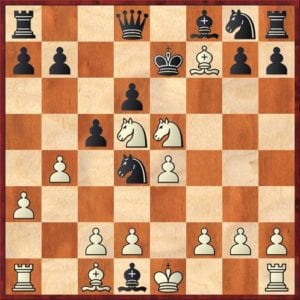

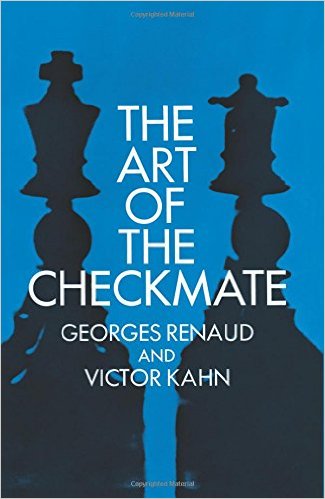
I would love to see some of your own Jerome Gambit games, if you still have them.
Uhhhh… these are lost somewhere in the depths of the Chesscube server 🙂
Haven’t tried the Jerome’s Gambit for quite some time now. It is simply a losing opening 🙂